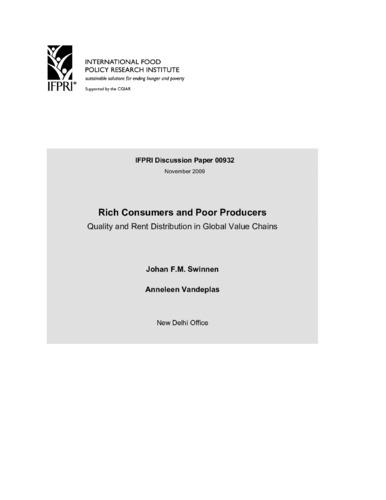By Title By Author By Country/Region By Keyword

Book Chapter
Global supply chains, poverty and the environment: Evidence from Madagascar

Journal Article
Spillovers from high-value export agriculture on land use in developing countries: evidence from Madagascar

Journal Article
Harness agrifood value chains to help farmers be climate smart: Incentives and structures exist to improve farming practices

Working Paper
Rich consumers and poor producers: Quality and rent distribution in global value chains

Journal Article
Global retail chains and poor farmers: Evidence from Madagascar

Journal Article
Media, monitoring, and capture of public funds: Evidence from Madagascar

Working Paper
Growth in high-value export markets in sub-Saharan Africa and its development implications

Journal Article
Regional agreements and the World Trade organization negotiations

Working Paper
The broken broker system? Transacting on agricultural wholesale markets in India (Uttarakhand)

Journal Article



